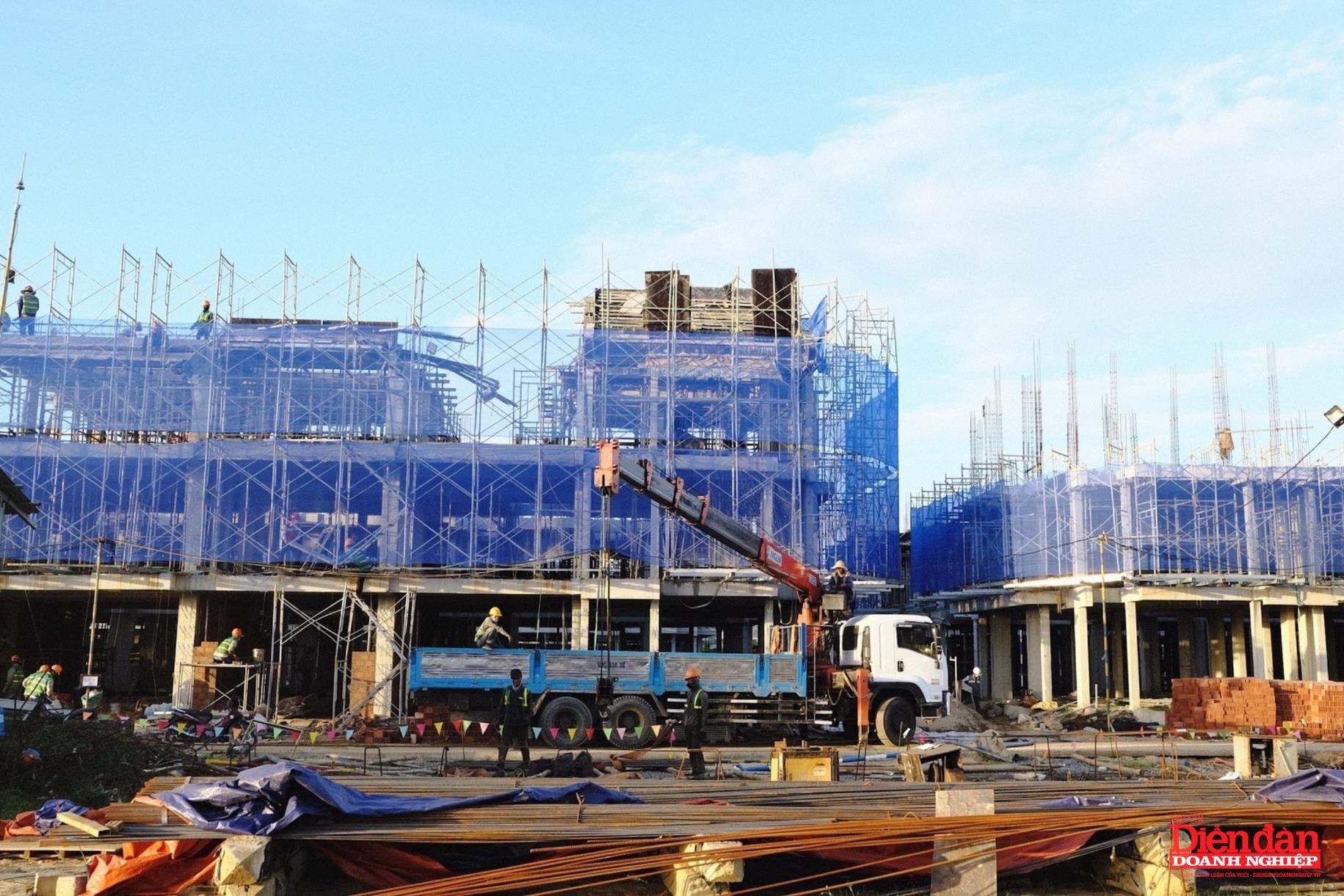Real estate market in Q3 2024: Heating up or Generating heat?
After a difficult period, the Vietnam real estate market recovered favorably in Q3 and the first nine months of 2024 because to supporting government measures and economic stability.
Notably, August 1, 2024, five months ahead of schedule, marked the official implementation of the Housing Law 2023, the Real Estate Business Law 2023, and the Land Law 2024. These regulations have helped create a more thorough legal framework for the real estate industry and have ushered in a new era of sustainability, health, and safety.

Various real estate segments, including residential, commercial, and industrial properties, showed promising growth signs with numerous new projects being launched.
According to Ms. Pham Thi Mien, Deputy Director of VARs IRE, who presented the Q3 and nine-month 2024 market report, the housing market has begun to exhibit indications of "heating up." With nocturnal bidding sessions drawing hundreds or even thousands of competitors eager to camp out to obtain seats, land auctions are now more competitive than ever. Record-breaking winning offers have been made, matching those for completely built project land.
With prices consistently hitting all-time highs in both main and secondary markets, the apartment market was another factor driving the market heat. Due to high demand, buyers who are keen to purchase units from current owners have been calling frequently. New apartment developments have seen high uptake rates in spite of price increases.
Alongside apartments, some new low-rise projects from major developers have seen record-breaking reservations, even with increasing prices. Buyers and investors often accept paying a premium to secure well-located units.
Signs of "Generating Heat"
Alongside these encouraging trends, the market did, however, show indications of "generated heat." These include increased home prices, speculative land hoarding, and opaque real estate transactions. Due to the influx of small-scale investors seeking rapid returns, real estate values surged to unreasonably high levels. The apartment market also showed signs of speculation, as speculative groups' influence drove up resale prices.
Despite some improvements, these patterns were mostly caused by supply constraints.
In Q3 2024, the housing market recorded 22,412 products offered for sale, including approximately 14,750 new products—a 25% decrease compared to the previous quarter but a 60% increase year-on-year. Despite the statistical decline, the supply in Q3 reflected "growth" as several new projects, especially large-scale ones, began to stir market excitement.
In 2024, 38,797 new products were released in the first nine months. 70% of the new supply came from the apartment market, which was dominated by goods costing more than VND 50 million per square meter. The supply was still very polarized. There were no reasonably priced commercial flats available. With 46% of the new supply, the North dominated the region, followed by the Central region (29%), and the South (25%).
Approximately 10,400 successful transactions were recorded in Q3, which translates to a 51% absorption rate, but the majority of supply was found in high-end and luxury segments, according to VAR's research. This indicates that despite growing prices, especially those associated with land, there is still a high demand for new real estate products.

Apartment transactions dominated, accounting for 71% of total housing transactions in Q3.
Absorption rates and transaction volume rose by 28 percentage points and 80% year over year, but fell by 1 percentage point and 25% from the preceding quarter. With new projects attaining an average absorption rate of 75%, apartment transactions accounted for 71% of all housing transactions in Q3. Shortly after its debut, several apartment complexes in Hanoi reported absorption rates as high as 90%.
Smaller flats are increasingly being built to appeal to young families and single people while lowering overall unit costs. The best liquidity has also been demonstrated by this area.
In the first nine months of 2024, the market recorded 30,589 successful transactions, 2.5 times more than the same period in 2023. Many new projects launched in late September saw overwhelming interest and large booking deposits.
As supply-demand mismatches widened, housing prices stayed high in both primary and secondary markets, especially in the apartment segment. Despite improvements, supply is still unable to keep up with demand. The majority of new supply still aims for high standards, which raises the cost of investments, particularly land.
Despite better supply, Hanoi's main prices increased in Q3 and showed no signs of slowing down. Even when liquidity stabilized following a period of rapid growth, new projects, ranging in height from low-rise to high-rise, primarily belonged to the high-end and luxury categories, maintaining high secondary market pricing.
In Da Nang, primary apartment prices reached record levels, with over 50% of new supply priced above VND 80 million per square meter. However, strong absorption persisted, driven by demand from out-of-province investors, especially those from Hanoi. Secondary prices also improved, with residential land prices in certain areas increasing by 10-25% year-on-year.
Primary prices in Ho Chi Minh City stayed high and steady since existing projects provided the majority of the supply. New supply was more expensive, and nearby provinces saw modest 3-5% rises in primary prices.
According to research of apartment price indices that represent the average price changes of 150 chosen projects that VARs keep an eye on, the average selling price in Hanoi by Q3 2024 was close to VND 60 million per square meter, a 64.0% rise over Q2 2019. Over the same time period, Ho Chi Minh City's average prices increased by 30.6%, from VND 49.2 million to VND 64.2 million per square meter. The market index in Da Nang increased by 46.2%, outpacing the growth in Ho Chi Minh City.
Demand for real estate, including housing and investment, continued shifting toward suburban areas and secondary markets offering more reasonable prices. Apartments and residential land priced below VND 3 billion were highly sought after in Hanoi and Ho Chi Minh City.








